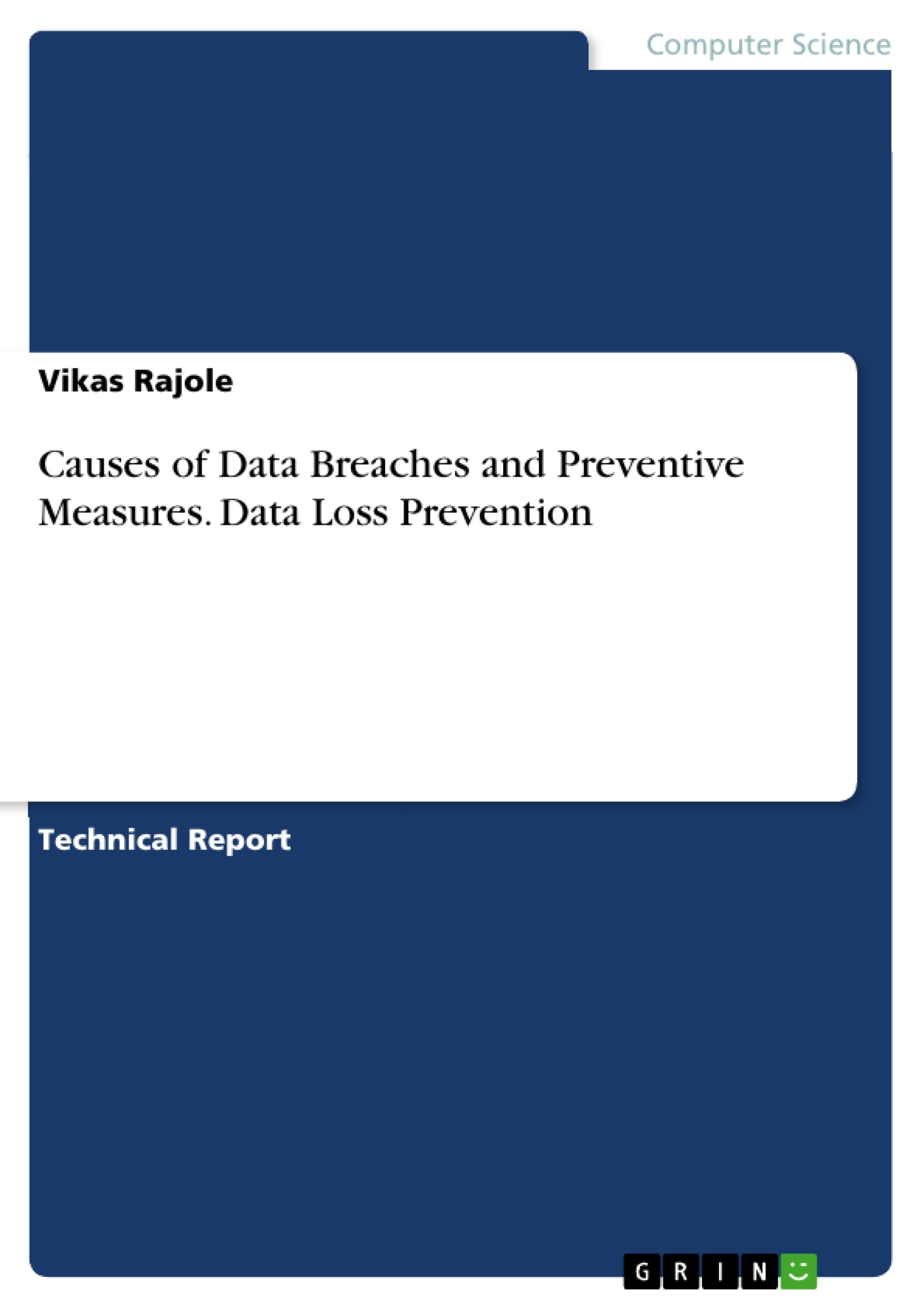As technology evolves, the threat landscape evolves. The threat landscape has changed from
mere script kiddies for fun to organised cyber crime to steal data for identity theft and
monetary gains.
It is very important to protect the business data from all kind of data breach attacks in order
to maintain the brand reputation and customer faith. New laws and governance policies
make it mandatory for organisations to protect customer data. This project talks about the
different effect of data breaches and preventive measures. This project targets mostly on the
'confidentiality' trait of the information security's CIA triad.
Inhaltsverzeichnis (Table of Contents)
- Abstract
- Chapter 1 Introduction
- 1.1 Background
- 1.2 Project Objectives
- 1.3 Methods Used
- Chapter 2 Causes of Data Breach
- 2.1 Types of data breaches
- 2.1.1 Well-meaning insider or Benevolent Insider
- 2.1.2 Malicious Insider
- 2.1.3 Malicious Outsider or Targeted attacks
- 2.2 Tools and techniques used by Malicious Outsiders or Hackers
- Chapter 3: Laws & Cost of Data Breach
- 3.1 UK Law & Governance
- 3.1.1 Data Protection Act
- 3.1.2 Privacy and Electronic Communications Regulations
- 3.2 Cost of data breaches
- Chapter 4: Existing Security Mechanisms
- 4.1 Antimalware, Antispyware & Proactive Protection
- 4.2 Firewall
- 4.3 IDS/IPS
- 4.4 SIEM (Security Information and Event Management)
- 4.6 Vulnerability Scanning and patching
- Chapter 5: Analyze DLP Solutions to Prevent Data Breaches
- 5.1 How does Data Loss Prevention system Work?
- 5.2 Approaches by a DLP system to prevent Data Loss
- 5.3 Types of Data Loss Prevention Systems
- 5.4 Architecture of Symantec Data Loss Prevention Solution
- 5.5 DLP Honey Pots to Detect Malicious Insiders
- Chapter 6: Conclusion & Recommendations
Zielsetzung und Themenschwerpunkte (Objectives and Key Themes)
This project examines the causes of data breaches and explores various preventive measures. The primary objective is to understand the nature of data breaches and their impact on organizations, focusing particularly on the confidentiality aspect of information security.- Types of data breaches and the actors involved
- Tools and techniques employed by malicious actors
- Legal frameworks and regulations surrounding data protection
- The cost of data breaches and their impact on business
- Existing security mechanisms and their effectiveness
Zusammenfassung der Kapitel (Chapter Summaries)
- Chapter 1 provides an introduction to the project, outlining the background, objectives, and methodologies employed.
- Chapter 2 delves into the causes of data breaches, exploring different types of breaches, including those caused by well-meaning insiders, malicious insiders, and malicious outsiders. This chapter also examines the tools and techniques used by hackers to carry out these attacks.
- Chapter 3 examines relevant laws and regulations, focusing on UK law and governance surrounding data protection. This chapter also analyzes the significant costs associated with data breaches.
- Chapter 4 investigates existing security mechanisms to prevent data breaches, such as antimalware, antispyware, firewalls, intrusion detection and prevention systems (IDS/IPS), SIEM (Security Information and Event Management), and vulnerability scanning and patching.
- Chapter 5 focuses on data loss prevention (DLP) solutions, explaining how they work, different approaches to prevent data loss, types of DLP systems, the architecture of Symantec DLP solutions, and the use of DLP honeypots to detect malicious insiders.
Schlüsselwörter (Keywords)
Data breaches, information security, confidentiality, cybercrime, targeted attacks, data protection, regulations, cost of data breaches, security mechanisms, antimalware, antispyware, firewalls, IDS/IPS, SIEM, vulnerability scanning, data loss prevention (DLP), honeypots, malicious insiders, malicious outsiders.
Ende der Leseprobe aus 43 Seiten
- nach oben
- Arbeit zitieren
- Vikas Rajole (Autor:in), 2012, Causes of Data Breaches and Preventive Measures. Data Loss Prevention, München, GRIN Verlag, https://www.grin.com/document/214310
Blick ins Buch



